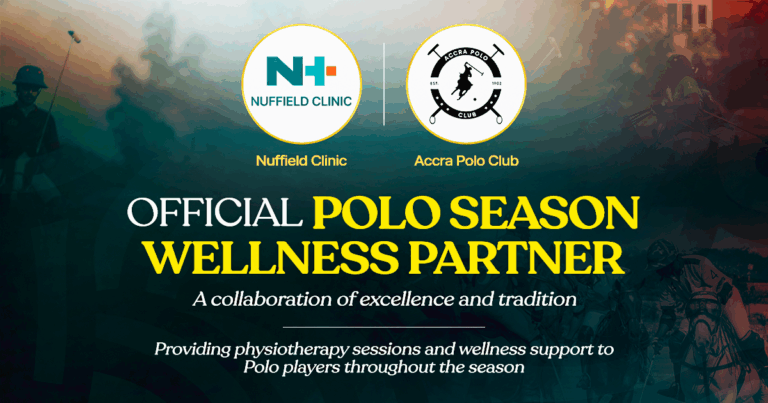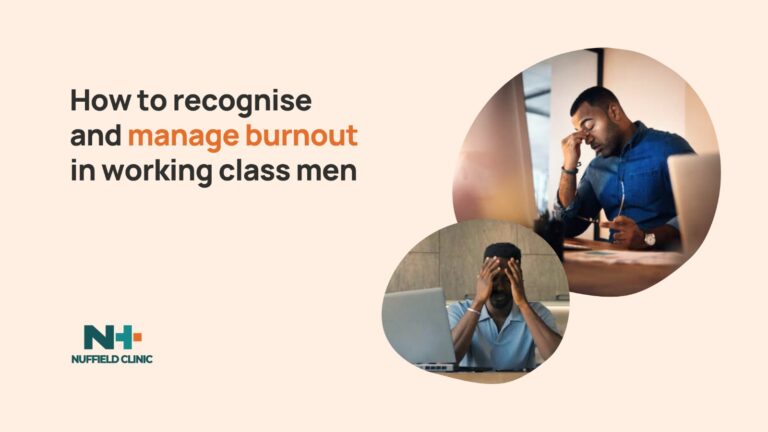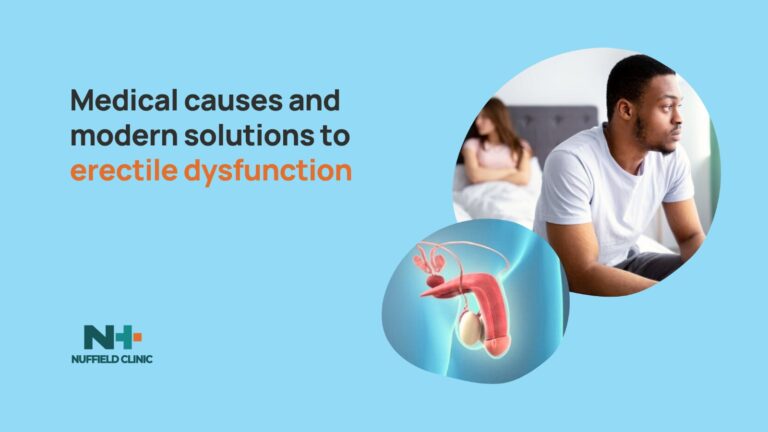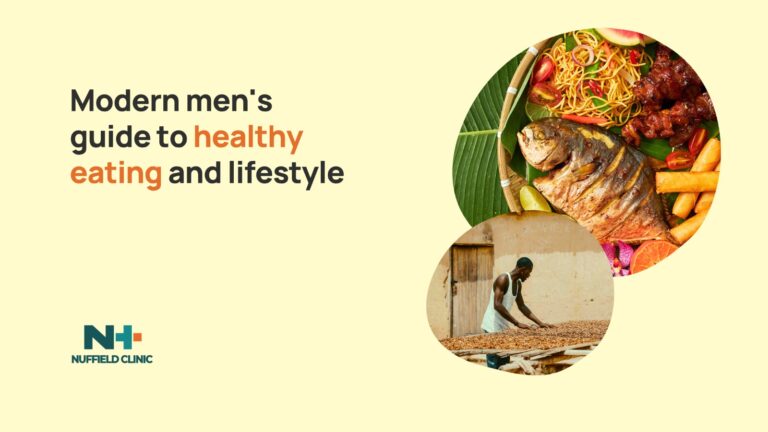Symptoms, Myths, and Treatments of Low Testosterone in Men
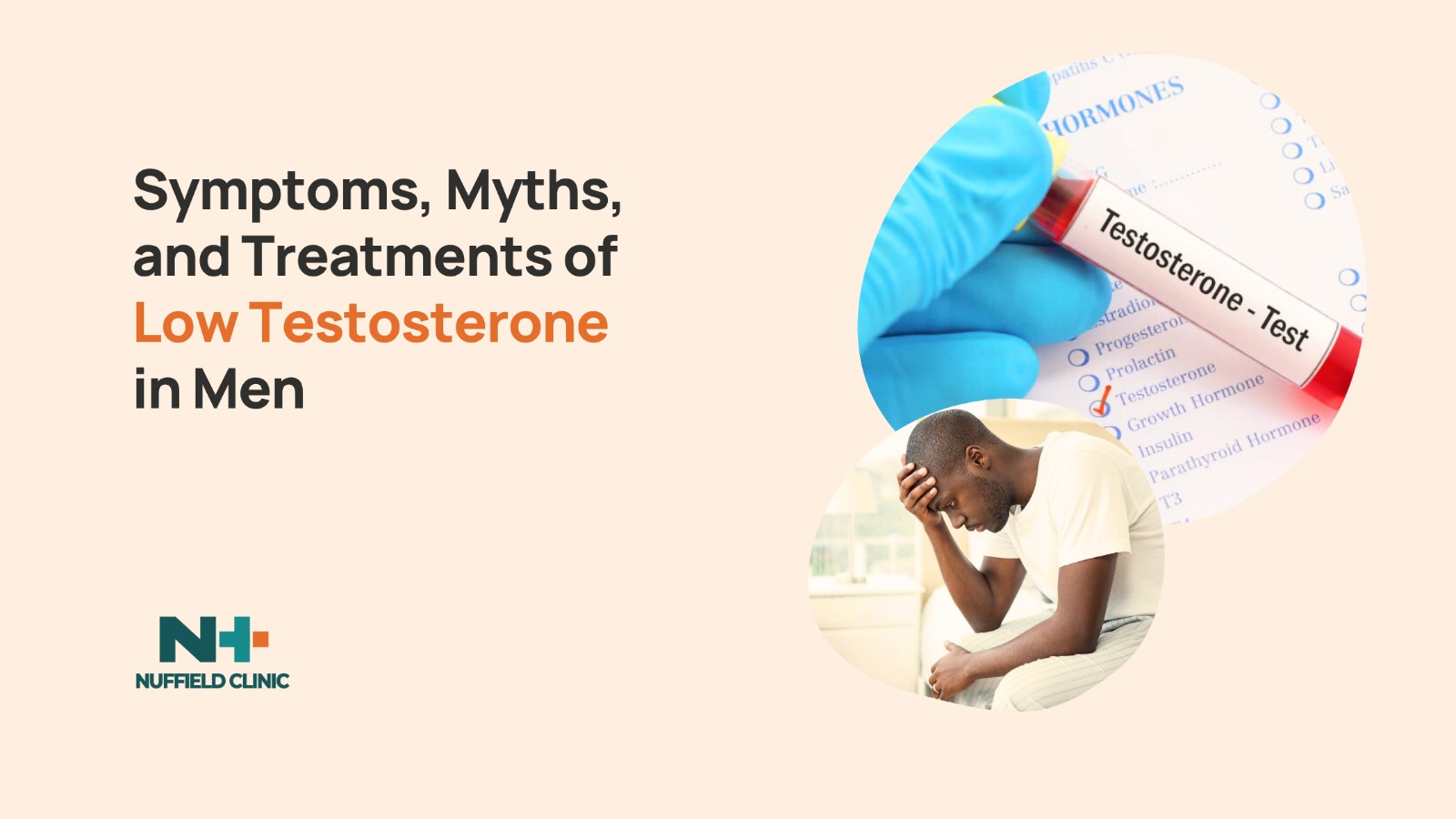
What are the symptoms, myths how low testosterone in men, and how is it treated? Health information is abundant but often fragmented; it is now very easy for the modern man to miss crucial warning signs, particularly those tied to hormonal imbalances. If you are a man experiencing chronic fatigue, diminished sexual desire, or emotional instability, this article is crafted for you.
As a Physical Therapist at Nuffield Clinic, I have seen firsthand how subtle physical complaints often mask a deeper, hormonal cause.
This comprehensive briefing aims to demystify Low Testosterone (Low T), an often misunderstood yet highly consequential condition affecting millions of men worldwide. We will explore its physiological foundations, symptoms, causes, myths, treatment options, and lifestyle interventions that can make a lasting difference. You will also discover how Nuffield Clinic’s integrated approach to nutrition, exercise, and hormone health can support your recovery and well-being.
Understanding testosterone and low T
Testosterone is more than just the hormone that fuels sexual drive and reproductive function. It is produced primarily in the testicles, and to a lesser extent in the adrenal glands, to shape the very core of male physiology, support muscle mass, bone density, cognitive clarity, and emotional resilience.
In fact, it influences “many aspects of men’s health, from their ability to get erections and enjoy sex to the strength of their bones and the functioning of the brain.”
Despite being a naturally occurring hormone in both sexes, testosterone exists in much higher quantities in men. A healthy adult male typically has testosterone levels ranging between 300 and 1,000 nanograms per deciliter (ng/dL). However, it’s not just the total amount that matters; only about 1–3% of testosterone is “free,” or biologically available. The rest is bound by proteins like SHBG (Sex Hormone Binding Globulin) and albumin, rendering it temporarily inactive. Therefore, diagnosing low testosterone often requires more than a simple blood test.
Low testosterone, or male hypogonadism, also referred to as testosterone deficiency syndrome, is diagnosed when testosterone falls below the functional threshold, generally below 300 ng/dL, or when bioavailability is too low to meet the body’s needs. While testosterone naturally declines with age (around 1% per year after age 30), the emergence of debilitating symptoms is not a normal or inevitable part of ageing.
Recognising the symptoms
Low testosterone presents itself in multiple, often overlapping dimensions: physical, sexual, cognitive, and emotional. No two cases are identical, and while some men may experience only mild disruptions, others report symptoms that drastically impair quality of life.
The most common and highly suggestive symptoms include:
- A marked loss of libido, often described as a sudden or unexplained drop in sexual interest
- Erectile dysfunction or difficulty sustaining erections, sometimes accompanied by a decline in morning erections
- Chronic fatigue, lack of vitality, and a persistent sense of burnout
- Mood disturbances such as irritability, anxiety, depression, or emotional numbness
- Loss of muscle mass and physical strength, coupled with longer recovery times from exercise
Other frequently reported effects include increased abdominal fat, gynecomastia (male breast tissue), decreased bone density, brain fog, sleep disturbances, and reduced facial and body hair. Less commonly acknowledged, but equally significant, are joint pain, backache, night sweats, and in some cases, infertility.
It’s crucial to understand that many of these symptoms are non-specific and can be misattributed to stress, ageing, or lifestyle. This is precisely why accurate diagnosis is essential.
Causes and risk factors
The causes of low testosterone fall into two categories: primary hypogonadism, where the testicles fail to produce adequate testosterone, and secondary hypogonadism, which originates in the brain’s regulatory centres, the hypothalamus and pituitary gland.
Age is the most prevalent factor, but age alone should not be considered a cause of clinical testosterone deficiency. Conditions such as obesity, diabetes, hypertension, metabolic syndrome, and chronic illness have emerged as more accurate predictors. In fact, a one-point increase in BMI correlates with a 2% decrease in testosterone, and a four-inch gain in waist circumference increases the odds of low T by 75%.
Other contributing factors include:
- Injury to or removal of the testicles
- Chemotherapy or radiation treatment
- Thyroid dysfunction
- Pituitary or hypothalamic disorders
- Substance abuse (notably alcohol and marijuana)
- HIV/AIDS
- Severe malnutrition or chronic stress
- Certain medications
- Genetic conditions such as Klinefelter syndrome or Kallmann syndrome
Ironically, unsupervised testosterone use, especially through illicit anabolic steroids, can cause the body to suppress its natural production, leading to long-term deficiency once external sources are withdrawn.
Myths and misconceptions
The world of men’s health is riddled with half-truths, particularly around testosterone. Some of the most persistent myths include:
- Myth 1: “Low testosterone is just a normal part of ageing.”
While a slow decline is natural, significant symptoms are not. Low T should never be accepted as a default. - Myth 2: “Testosterone therapy is a magic solution.”
TRT (Testosterone Replacement Therapy) can be highly effective, but it’s not a panacea. For many men, lifestyle interventions, like improved diet and weight loss, can restore hormone levels naturally. - Myth 3: “All testosterone products are safe.”
Over-the-counter supplements or black-market steroids are dangerous, often adulterated, and may lead to addiction, cardiovascular disease, aggression, and psychosis. - Myth 4: “TRT boosts fertility.”
Quite the opposite, TRT can suppress sperm production, making it unsuitable for men who wish to conceive.
Diagnosis and treatment
If low T is suspected, a comprehensive evaluation is critical. Diagnosis begins with a detailed medical history, a physical exam, and blood tests, typically conducted in the early morning when testosterone levels peak. Multiple measurements may be required to account for natural fluctuations.
Where necessary, additional lab tests such as luteinizing hormone (LH), prolactin, and thyroid function panels are used to identify underlying causes.
For men confirmed to have low testosterone and moderate to severe symptoms, TRT is a legitimate option. It can be administered via:
- Gels or creams
- Injections
- Skin patches
- Implants under the skin
- Oral tablets or nasal sprays
TRT can alleviate fatigue, restore libido, improve bone and muscle strength, and enhance mood. However, treatment requires ongoing monitoring, blood work, prostate exams, and cardiovascular screenings to ensure safety.
TRT is most effective in men with severely low levels, though it has demonstrated benefit across age groups when appropriately prescribed.
The role of lifestyle
Before or alongside hormone therapy, diet and lifestyle adjustments play a profound role in restoring balance. Weight loss, physical activity, proper sleep, and nutritional optimisation can boost testosterone without medical intervention for many men.
At Nuffield Clinic, our multidisciplinary team designs evidence-based nutrition and fitness programs that help men not only manage low testosterone but reclaim a sense of agency over their health.
Through our Diet and Nutrition Services, we support you with:
- Nutritional counselling tailored to hormonal health
- Anti-inflammatory meal plans are designed to reduce visceral fat
- Fitness regimens focused on resistance training to naturally boost testosterone
- Professional supplementation advice
- Education on managing sleep, stress, and metabolic risks
As shared by one of our clients, Jeremy: “Once I addressed my testosterone levels, I didn’t just feel better—I wanted to take better care of myself. It changed everything.”
It is a treatable medical condition with far-reaching consequences for mental, physical, and emotional well-being. Low testosterone is neither a character flaw nor an inevitable fate. Recognising the symptoms early and seeking professional evaluation is the first step toward recovery.
If you suspect you may be experiencing symptoms of low testosterone, book a consultation with Nuffield Clinic’s team of physical therapists, nutritionists, and physicians.


